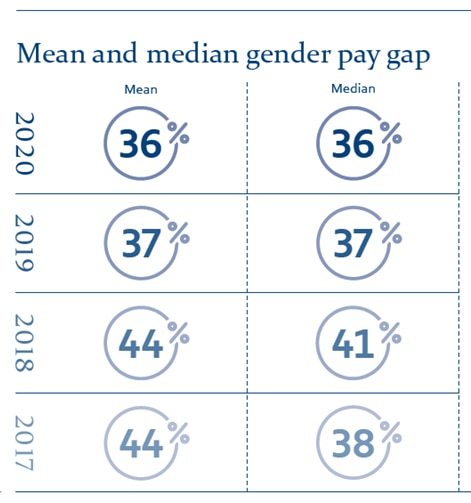Today we’re publishing our 2021 Gender Pay Gap Report, which captures Carnival UK’s gender pay gap as of April 2020.
What is the Gender Pay Gap?
The gender pay gap measures the difference in the pay of all men and all women across our business. This is calculated by comparing the average (mean) and mid-point (median) pay for each gender (see our FAQs here for a more detailed explanation). A gender pay gap suggests that a greater proportion of the male population in an organisation are in positions that command higher pay, when compared to the female population. To remove the gap, we need greater gender balance across the organisation.
Why does gender pay gap reporting exist?
The gender pay gap is a global issue and, according to the World Economic Forum, won’t close until 2186. The European Commission believes that the pay gap is due to a variety of factors including education choices, job preferences, work experience, breaks in employment, unwillingness to negotiate salaries, and discrimination. The UK Government introduced mandatory gender pay gap reporting for companies with more than 250 employees, to ensure they focus on working to resolve any pay gap issues.
We support full transparency on this important issue, as it helps to create awareness of the gender balance challenge across the organisation, informing areas of focus, (such as resourcing, talent management and progression), and assessing the impact of the positive action taken. We know that having a better gender balance is critical to us creating a more inclusive culture and supports our organisational vision:
We are committed to a positive and just corporate culture, based on inclusion and the power of diversity.
Research shows it will also have a positive impact on our ability to meet and exceed our guests’ expectations, our colleague engagement and as a result, our financial performance.
So how do we fare at Carnival UK?
Since reporting began, our mean gender pay gap has reduced by 8% and our median gender pay gap by 2% and there is still more to be done.
To eradicate the gap we need to continue increasing the number of women in senior roles in general, but we also need to increase male representation in some areas and female representation in others. For example, males are underrepresented in our contact centre and females are underrepresented in maritime, engineering and technical disciplines.
We believe these patterns are seen across the industry and so we need to consider societal as well as organisational impacts on recruitment and progression and take positive action to support more balanced recruitment at lower levels and greater recruitment and progression of women at the senior levels. In the report Simon Palethorpe, President Carnival UK commented:
“We are determined to achieve greater balance and we are committed to continuing and improving upon our inclusive approach to recruitment and progression.”
As well as reporting on our gender pay gap, we report on the gap relating to bonus payments. Our gender bonus gaps have seen significant reductions since the previous reporting year, with the mean gap falling from 81% to 70% and the median gap reducing from 97% to 46%. The 2019 figures were particularly high, skewed by a one off £50 voucher, however, we have still seen a significant reduction even when accounting for this.
To read more about this and the actions we have taken to reduce our gender pay gaps, take a look at our report here. You can also find a gender pay gap report for Fleet FMSI employees onboard Britannia in April 2020 here, as well as our supporting FAQs which may help answer any questions you have.

